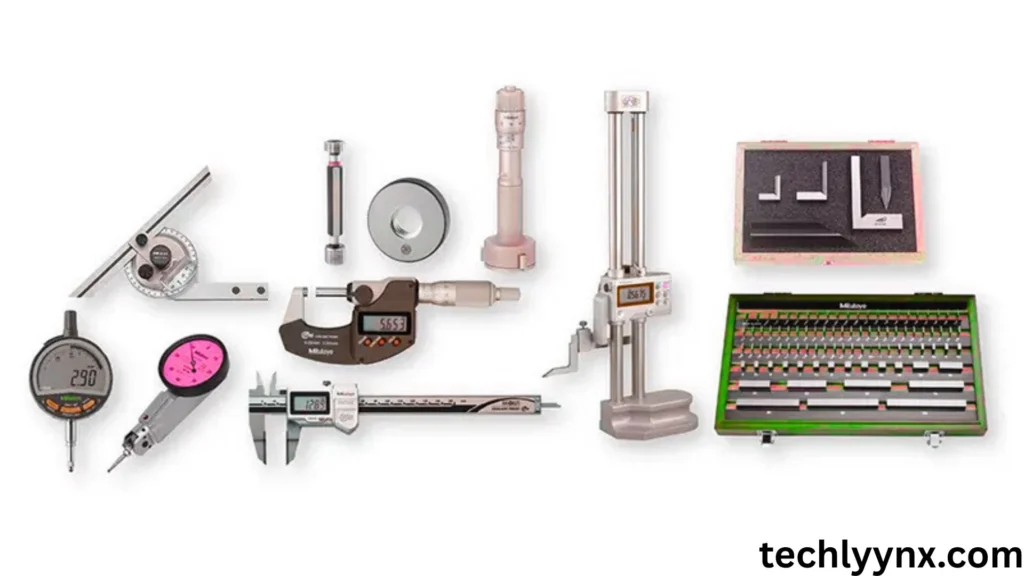Engineering has always been at the center of human development. From the discovery of the wheel to the building of modern skyscrapers, bridges, airplanes, and digital systems, engineers have laid the groundwork for civilization. However, underlying every amazing success is a set of tools—both physical and digital—that enable such innovation.Most people are familiar with the common instruments: hammers, wrenches, drafting tables, and laptops running design software. But the world of engineering tools is far more diverse, and in recent years, it has expanded into areas many professionals and students might not know exist.
This article explores some of the essential engineering tools you didn’t know before, combining traditional categories with advanced technologies that are reshaping industries worldwide.
What Are Engineering Tools?
Top 8 Generative Design Software Tools in 2025
Engineering tools are fundamentally instruments, devices, or software systems that assist engineers in the design, analysis, construction, testing, and maintenance of structures, machinery, and processes. They ensure precision, save time, lower costs, and increase safety.
Historically, most engineering instruments were mechanical or manual, such as rulers, slide rules, protractors, and micrometers. However, today they comprise anything from AI-powered simulation platforms to IoT-enabled sensors and virtual reality systems.
Understanding these technologies is crucial not only for engineers, but also for organizations that want to stay competitive in rapidly changing industries.
Categories of Modern Engineering Tools
- Design and Drafting Tools:Design is the foundation of all engineering projects, and contemporary tools have made it faster, smarter, and more accurate. CAD Software (AutoCAD, SolidWorks, Fusion 360): Digital design environments that allow engineers to see items in 2D and 3D before they are built. Generative Design: AI-powered tools that recommend the best designs and structures based on input parameters. Finite Element Analysis (ANSYS, COMSOL): Software for testing stress, heat transfer, and vibration under simulated real-world circumstances.
- Measurement and Testing Tools: No design can succeed unless the measurements are exact. Vernier Calipers and Micrometers are still useful in mechanical engineering. Oscilloscopes and multimeters are fundamental tools in electrical and electronic engineering. Laser Scanners and Ultrasonic Testing: Advanced techniques for precision analysis.
- Manufacturing and Prototyping Tools: Making an idea a reality necessitates innovative production processes. 3D printers allow for quick prototyping in plastic, resin, and even metal. CNC machines are automated milling, cutting, and shaping equipment. Robotic arms are used in assembly lines to ensure precision manufacturing.
- Project Management and Collaboration Tools: Engineering tasks are rarely completed by individuals working alone. MS Project, Primavera P6, Wrike, and Asana are among the tools that assist teams stay on schedule and within budget. Cloud-based design tools such as Onshape enable engineers to collaborate in real time, regardless of where they are situated.
Why They Matter
The importance of engineering tools cannot be overstated:
- Precision: Tools ensure tight tolerances are met.
- Efficiency: They save time in design and production.
- Safety: They detect and prevent failures.
- Innovation: They allow engineers to experiment quickly.
- Collaboration: They connect global teams seamlessly.
Now let’s go deeper into the essential engineering tools you didn’t know before — the hidden gems and next-generation platforms that are quietly transforming the profession.
Advanced Simulation Platforms — Essential Engineering Tools

Traditional simulation software is well-known, but modern platforms use AI and machine learning to deliver faster and more accurate results.
Engineers can save days of effort by using systems that automatically modify mesh quality or predict fatigue behavior. These complex simulations are especially useful in aircraft, automotive, and chemical engineering, where evaluating each prototype physically is both costly and time-consuming.
AI-Powered Design Assistants
Artificial intelligence has found its way into design. AI-based engineering tools can:
- Suggest design alternatives.
- Predict structural weaknesses.
- Optimize materials for strength and sustainability.
For example, a civil engineer constructing a bridge may include constraints such as load, cost, and materials. The AI system then generates numerous alternative designs, some of which a human could never have envisaged.
Cloud-Based Softwares

Engineering is no longer limited to computers and local networks. Cloud-based solutions allow engineers to:
- Share 3D models instantaneously.
- Collaborate in real time.
- Access high-performance computing without investing in expensive infrastructure.
This has proven increasingly vital for international teams working on projects across continents.
Digital Twins and Predictive Maintenance
7 Real-World Digital Twin Examples in Action
The digital twin is a new technical tool in today’s industry. This is a virtual representation of a physical thing, such as a jet engine, manufacturing floor, or power plant, that gets real-time data from sensors. Engineers utilize these twins to track performance, anticipate breakdowns, and schedule maintenance only when necessary.
This not only cuts downtime but also saves millions of dollars per year in industries such as aviation, energy, and manufacturing.
Precision Measurement with Smart Tools

Traditional calipers and rulers have given way to smart measurement tools. For instance:
- Laser trackers: For high-precision alignment.
- 3D scanning arms: For reverse engineering complex parts.
- IoT-enabled micrometers: That log data directly into cloud systems.
Such innovations cut down human error and make reporting seamless.
Engineering Tools for Collaboration and Project Tracking
As projects expand in size and complexity, coordinating becomes equally crucial as design. Modern collaboration solutions combine engineering data with Gantt charts, cost-tracking software, and cloud storage.
These engineering tools do more than just organize tasks; they increase transparency and reduce costly miscommunications.
Knowledge Databases and Reference Tools
Another category of overlooked engineering tools is knowledge platforms:
- Engineering Toolbox: For quick calculations.
- Material Databases: Such as CES EduPack, which helps choose the right alloy, polymer, or composite.
- Standards Libraries: Like ASTM, ISO, and ASME databases, which ensure compliance and safety.
Access to the right information at the right time often makes the difference between a successful design and a failed one.
Future of Engineering Tools
Engineering tools will evolve with trends such as sustainable design software, quantum computing simulations for materials science, and fully autonomous AI platforms that handle entire design cycles. Early adoption of these technologies will give engineers a competitive advantage.
Final Remarks
The toolbox of the 21st-century engineer includes substantially more than wrenches and CAD applications. Today’s professionals have access to a wide selection of technical tools, including AI-powered platforms, digital twins, cloud collaboration systems, and immersive AR/VR applications.
These crucial but lesser-known tools are more than just conveniences; they are changing the way projects are designed, implemented, and maintained.
Whether you are a student preparing for a career, a current engineer looking to improve your abilities, or a business executive aiming to increase efficiency, knowing about these vital engineering tools you didn’t know previously can mean the difference between falling behind and leading the pack.

